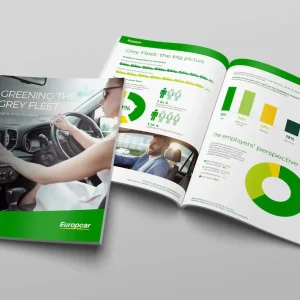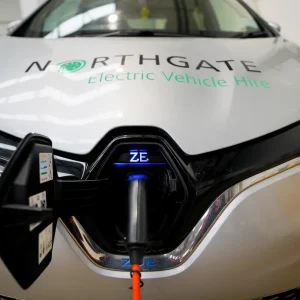
Rishi Sunak’s government has set a path for car manufacturers for 80% of new cars and 70% of new vans in Britain to be zero emission by 2030, increasing to 100% by 2035. This means the race is on for fleet managers to prepare their fleets for the transition to electric.
Looking at recent registration figures, it seems they’re doing just that. September 2023 SMMT figures show a 40.8% growth in large electric vehicle (EV) fleet registrations.
Although investing in necessary infrastructure will bring long-term financial savings and benefits, there can be potentially high capital expenditures for fleets initially. This requires careful and considered planning for keeping costs down – particularly with interest rates looking like they do – and remains a priority for fleets.
Here, we look at the most effective ways fleets can save money when installing chargers and operating EVs.
1. Develop a long-term EV charging infrastructure strategy
Businesses should always plan their EV charging strategy beyond their current fleet size and what they need in the short term. Instead, they should consider what they’ll need in five to 10 years’ time.
By future-proofing investments, the groundwork and costs for expansion are already considered if and when you need it. This can save significant amounts of money should you need to scale up while reducing the risk of costly vehicle downtimes.
And before installing charge points at every site you own, stop to think about the type of journeys your vehicles make. For example, if they’re not regularly travelling over 100 miles daily, you may be surprised at how the right infrastructure in the right locations can make all the difference.
Likewise, it could be more efficient and cost-effective to support your drivers in installing charge points at their homes for those who find it more convenient and have the opportunity for a home charger.
2. Optimise your energy usage
Managing Authorised Supply Capacity (ASC) effectively can save significant amounts of money when installing EV chargers.
ASC refers to the maximum amount of electricity that local utilities or grid operators can provide to your location. If this is exceeded, Distribution Network Operators (DNO) may require payment to cover the costs of upgrading the local electrical infrastructure. Upgrading substations, transformers, and power lines to accommodate higher demand is normally expensive, so it’s essential to optimise your energy usage first.
Many commercial electricity tariffs also include demand charges based on the highest level of power demand over a specific period (usually 15-30 minutes). Adding multiple EV chargers without considering ASC can lead to spikes in demand during charging sessions, resulting in higher demand charges. By managing the number and timing of charging sessions to stay within your ASC limits, these costly demand charges can be avoided.
Ways to optimise energy usage include smart energy management systems that prioritise load shifting, seeking demand management advice from a renewable energy supplier, and the use of smart charging points.
3. Government initiatives
The UK government still offers valuable grants and vouchers through initiatives like the Workplace Charging Scheme. This incentive provides up to £350 off per charging socket which equates to £14,000. Additionally, there is also the EV Infrastructure grant which offers 75% off or up to £15,000 towards the cost, eligible for businesses with 249 employees or less. Financial assistance opportunities like these can significantly reduce the upfront investment required for fleet charging infrastructure.
However, recent research conducted by Drax has found that nearly a third of senior decision-makers still aren’t familiar with the Workplace Charging Scheme. Given the considerable money you can save, All fleet decision-makers should look into government grants available so that they can take full advantage while they’re still available.
4. Install onsite generators to power EV charge points
Onsite generators are energy solutions that provide a primary power source for EV charging stations. These could include wind turbines, solar panels, battery storage, and anaerobic digestion systems.
To reduce reliance on the grid and overall energy costs, organisations that own their premises should consider if these onsite energy generators could work for them. For example, high-quality solar panels can last 25 years or more with minimal maintenance, providing a sustainable and long-term energy solution.
Once installed, excess energy can be stored or sold back to the grid, providing an additional revenue stream through what’s known as a Power Purchase Agreement (PPA). Drax’s 2023 research revealed that one in five large businesses that have already installed charge points cite that the extra income they make from selling back to the grid is one of the main benefits of EV infrastructure.
Benefits beyond cost
Workplace charging can enhance the credibility of your business while also making your employees’ lives simpler. Research from 2022 says 42% of companies have already switched suppliers or business partners at least once because their provider did not have adequate ESG credentials and commitments.
Investing in charging stations at your premises is a clear commitment to reducing your carbon footprint, provided you’re on a renewable electricity tariff.
Switching to an electric fleet is just the beginning of your sustainability journey, and there’s never been a better time to get started.
Adam Hall is director of energy services at Drax Electric Vehicles





